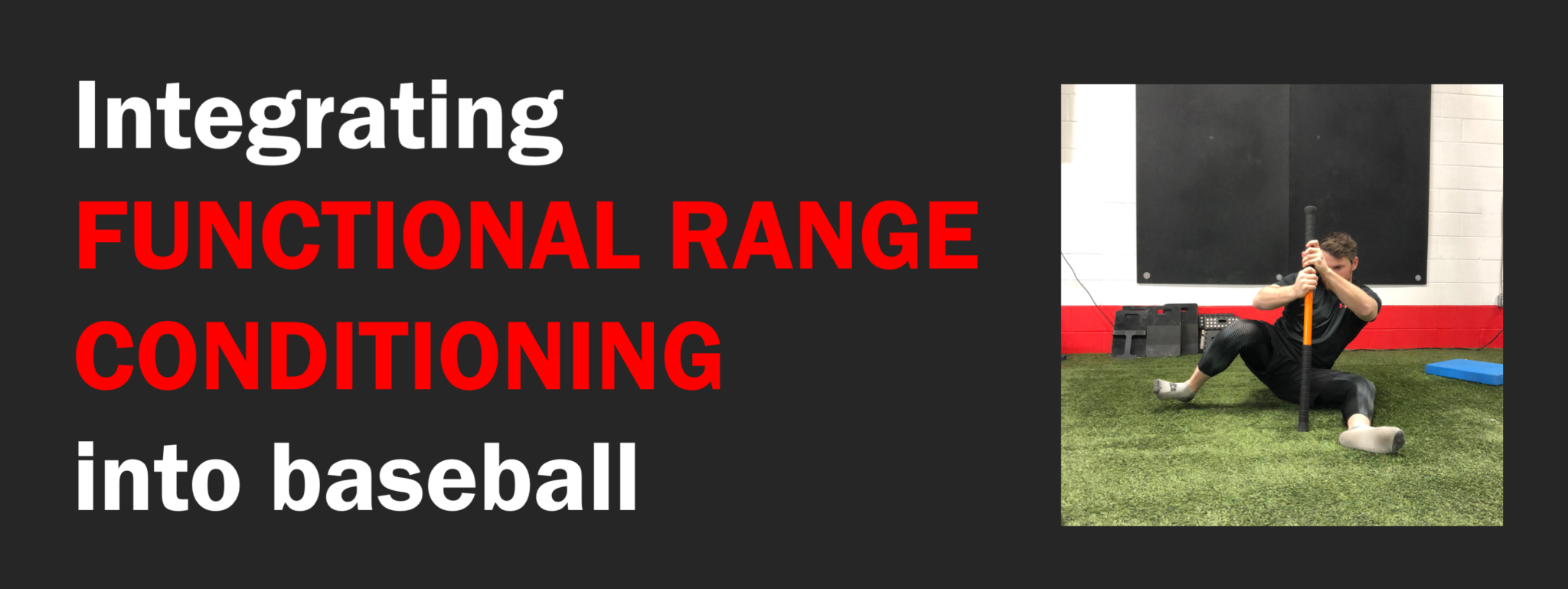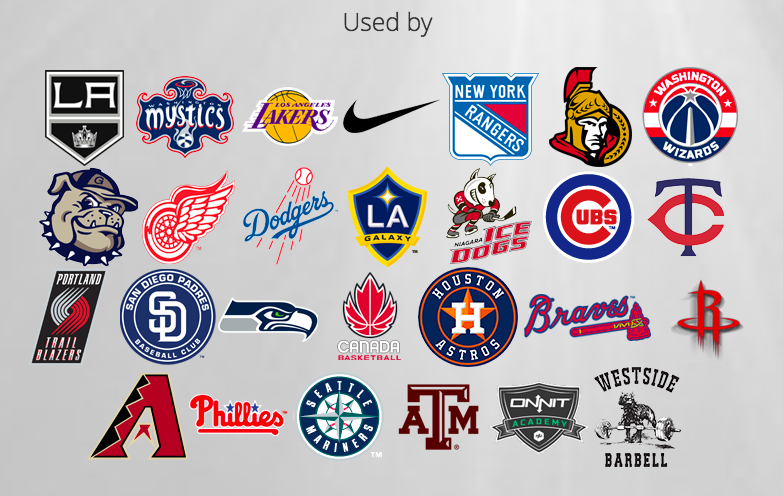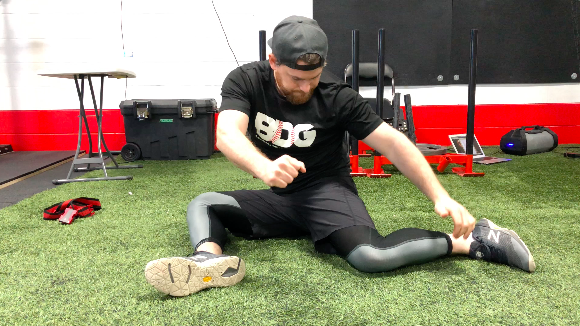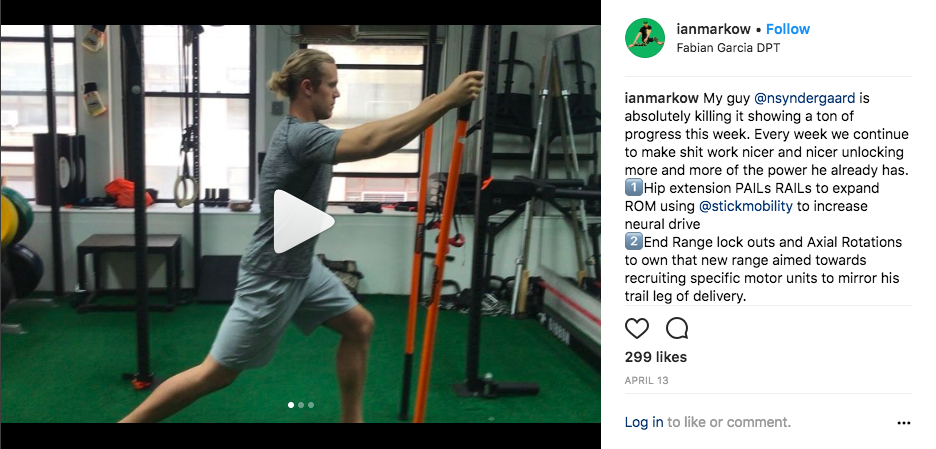Integrating Functional Range Conditioning into Baseball

Over the winter, you may have seen videos of MLB players doing some odd-looking mobility exercises (like Thor working with Ian Markow).
Maybe you were scrolling through social media and saw #makemobilitygreatagain and got caught up in the rabbit hole of watching hours of hip rotations, shoulder mobs, and jacked guys sweating buckets just trying to move his spine.
Functional Range Conditioning
And for good reason.
The brain child of Dr. Andreo Spina, FRC has been taught to many professional organizations, including nine MLB teams. It’s a course that is part of the greater Functional Range Systems classes, including the manual therapy course that I was lucky enough to assist with in the past.

At its core, the system is designed to strip the complexity of movement down and simply ‘make stuff work nice’.
By addressing and intervening at the level of the individual components, the joints, rather than starting with highly complex movements, we are accomplishing a few things.
FRC and Baseball
Functional Range Assessment

Improving Movement Capacity

Programming PAILS & RAILS

Monthly Plan for PAILS & RAILS

Well, today we are going to address that question once and for all.
Over the winter, you may have seen videos of MLB players doing some odd-looking mobility exercises (like Thor working with Ian Markow). Maybe you were scrolling through social media and saw #makemobilitygreatagain and got caught up in the rabbit hole of watching hours of hip rotations, shoulder mobs, and jacked guys sweating buckets just trying to move his spine.
Functional Range Conditioning
And for good reason.
The brain child of Dr. Andreo Spina, FRC has been taught to many professional organizations, including nine MLB teams. It’s a course that is part of the greater Functional Range Systems classes, including the manual therapy course that I was lucky enough to assist with in the past.

At its core, the system is designed to strip the complexity of movement down and simply ‘make stuff work nice’.
By addressing and intervening at the level of the individual components, the joints, rather than starting with highly complex movements, we are accomplishing a few things.
FRC and Baseball
For a sport that is well known for its asymmetry and acute changes in range of motion, you can probably already see how FRC may be helpful.
What we will go over now, is how we’ve been incorporating some of these principles into our program; mainly the Functional Range Assessment, increasing movement capacity in the off-season, and using CARs on recovery days.
Functional Range Assessment
In the femoroacetabular joint (hip), for example, we will quantify how much rotation is available, as well as total flexion, extension, abduction, and adduction. This done both passively and actively, paying very close attention to end-feel and tension.
Employing a checklist ensures that we do not get complacent, removes bias, and insulates us from error. What renowned author Atul Gawande taught us in the Checklist Manifesto.

As we’ve talked about before, ensuring that players maintain ‘normal for them’ ranges of motion throughout the season is critical to maintaining movement patterns and potentially avoiding injury.
The assessment also provides us information about how much sensory information is going to the brain regarding what composes that joint. The joint capsule is highly innervated with mechanoreceptors and is the first to perceive movement. This is important from a motor control standpoint as the internal sensory information helps guide the necessary external muscular response.
Ideally, we want our joints to express passive and active movement independent of each other, relative to their sporting demands! As they say quite frequently in FRC:
Improving Movement Capacity
In the general physical preparation (GPP) phase of our off-season training, one of our main goals is to ensure that our joints are functioning in the ranges required for their sport. For us, that primarily consists of FRC’s PAILS / RAILS (yes, I’m aware that’s a lot of acronyms). PAILS and RAILS, otherwise known as progressive / regressive angular isometric loading, are the first line of attack in improving range of motion.
Although the name may be confusing, the concept behind them is not.
Essentially, the goal is to perform isometric contractions at the end of a joints active range.

Programming PAILS & RAILS
How do you program them into your week? Do they have their own day? Help!
Well, these questions can typically be resolved by simply asking yourself the question ‘what adaptation are you prioritizing?’ For us, in the case of early GP we place a significant emphasis on improving range of motion.
If the main adaptation that we are shooting for is improving useable control and strength of hip internal rotation, for example, then we will prioritize it in the lifts. PAILS / RAILS exercises will be programmed in as 1A in our workouts.

From a weekly perspective, we will match the intensity to the theme of the day.
For example, on a Max Effort day, we will ramp up our isometrics into the 80+ % MVC range – assuming the athlete can handle that. On a Dynamic Effort day, we will ramp them up to ~60% MVC. Conceptually, we are looking at PAILS / RAILS no differently than an isometric at the bottom position of a squat. The only difference is that instead of integrated multiple articulations we are attempting to isolate one.
Monthly Plan for PAILS & RAILS
In sticking with our hip example, if the biggest rock that we see on the table (and on the mound) is a deficit in hip internal rotation, then we will address it multiple times per week.
In the past, we have made the mistake of attempting to improve multiple joints and ranges at a time. Our progress was slow, and instead of greatly improving one individual joint, we got mediocre results across several of them. This short cycle sprint mentality echoes our S&C programming.
Training economy matters, especially in a time constrained environment like we have in Canadian baseball.
A 17-year-old pitcher who needs to flash 90 MPH in 12 weeks to get a shot at playing collegiate baseball may not need that extra 10 degrees of IR. He may need to quickly accumulate strength and muscle mass.
A 19-year-old pitcher who already tops out at 93 MPH may need to focus primarily on improving controllable range. He may have filled the strength and power bucket already and controllable range may become priority number one.
Controlled Articular Rotations for Recovery
They are an assessment tool, a warm-up tool, and in this case, a recovery tool. With CARs, the goal is to take each joint in our body through a slow, deliberate, active, rotational movement at the outer limits of articular motion.
In doing so, we are scanning for areas of increased or decreased tension, sharp pain, and changes in controllable range.
Done properly, CARs are the best method that we’ve found for players to account for how their joints are handling the demands of training or competition.
On the day following a competition, for example, players would perform controlled articular rotations for each joint in their body. In doing so, their goal would be to scan for acute subjective changes in tension, soreness or sharp pain; all of which direct a different intervention.
Done as a daily routine, players can appreciate what normal is for them and pick up on any deviations. This has been tremendously helpful for us to pick up range of motion changes and address them before they become a problem.
Instructions for CARs
‣ Stabilize all articulations and perform an isometric contraction (with % tension matching movement goal) throughout your body to ensure strict rotation in the desired joint.
‣ Begin articular rotation slowly ensuring that it is occurring in the outer limit of movement
‣ Attempt to “expand the circle” with each repetition
This process has been instrumental for us in keeping our athletes’ joints moving well and getting ahead of potential problems, as well as serving as a tremendous aid in promoting autonomy in our athletes. As a result, we’ve seen them become more self-aware and proactive in taking control of their development.

